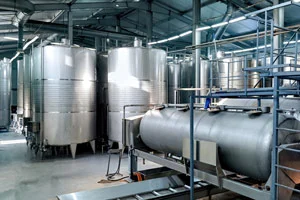- Processes
- Products
- Technology
Technology
Discover our Own Innovation Systems and High Technical Value. We are the present and future of innovation in winery equipment.
Instrumentation
A detailed analysis of a wine says a lot about its quality, so apart from the basic oenological analyses, it is essential to know those parameters that ensure the healthiness of the product as well as the quality of the wines at the height of the most demanding palates. A few of these methods are discussed below:
Liquid chromatography (HPLC)
Liquid chromatography (HPLC): this technique allows compounds to be separated based on their interaction with the mobile phase and the stationary phase of the chromatographic column. The combination of different columns and detectors makes it possible to quantify a multitude of parameters in wines and musts, such as sorbic acid (in demand for export analysis) and other organic acids (tartaric, ascorbic, etc.), sugars (glucose, mannose, fructose) and reduced/oxidised glutathione and L-cysteine (to determine the composition of yeast derivatives).
Inductively coupled plasma (ICP-OES)
ICP-OES: analysis of metals in wine matrices and oenological products using an inductively coupled plasma (ICP) system together with an optical emission spectrophotometer (OES). Metals generate characteristic atomic emission spectra that make it possible to detect and quantify the metals.
Photometric auto-analyser
This is a device with an innovative and advanced optical system based on a battery of LEDs that cover the most in-demand enzymatic and colorimetric methods in the oenological sector. Its high capacity for samples and reagents makes it possible to quickly process the musts and wines received.


